Rhomboid Shawls & Rectangles With Triangle Ends
Welcome to the next episode of my Shawl Design for Everybody series! Today’s topic in our shawl design course are rhomboids (parallelograms) and rectangles with triangle ends.
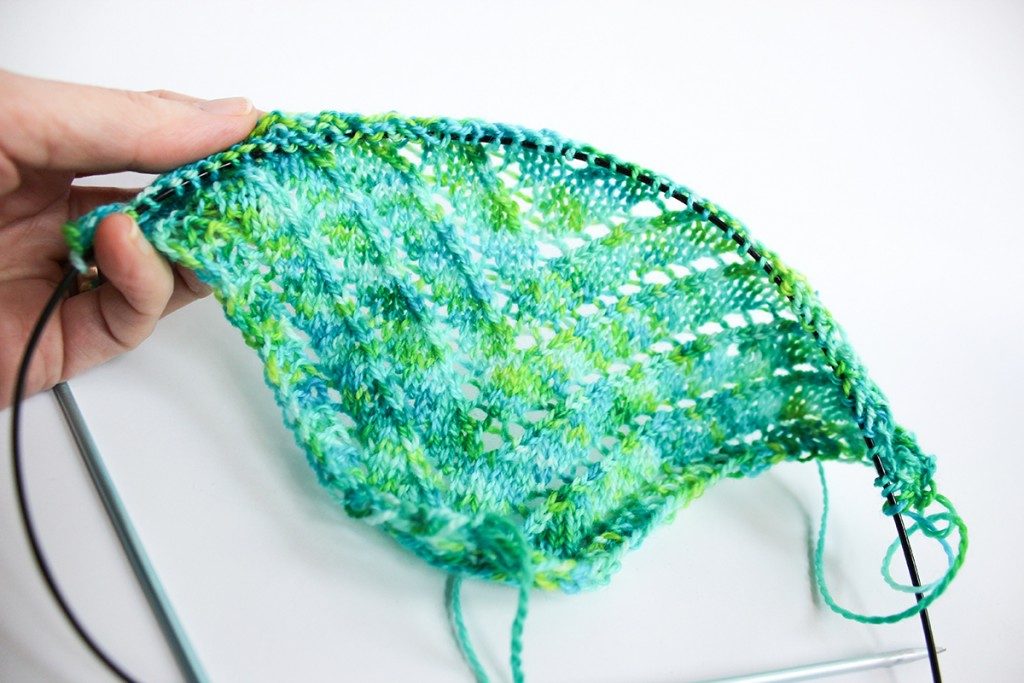
Rectangles With Triangle Ends
This shawl shape is achieved by combining square shawls worked from tip to tip with a rectangle in between the increases and decreases. We have already learned – in the episode Square Shawls Worked Diagonally (Tip to Tip) – that working a square shawl diagonally means starting at one tip, increasing to a certain size and repeating the reverse process for the other half of the shawl as shown in the figure below.
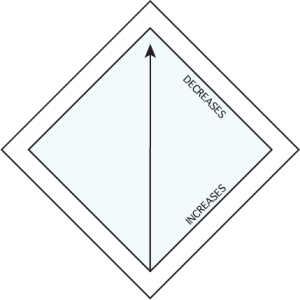
By introducing a rectangle between the two halves of this type of square shawl, the rectangle with triangle ends is formed. The design outline for such a shawl design pattern is as follows:
- CO 3 sts and purl one row.
- Work increase rows until shawl is of desired width.
- Work straight until shawl is of desired length.
- Work decrease rows until 3 stitches are left, then bind off.
Pattern Template: Rectangle With Triangle Ends
Our example assumes we are working a garter stitch edging together with the shawl body. The width of the edging (upper edge of the orange triangle) shall be two inches (one inch per side).
Work a swatch and measure gauge. Example: 5 sts / 6 rows per square inch.
Decide on the desired width at the widest point (diagonal) of the shawl. Example: 30 inches total width (incl. edging).
Calculate the relevant stitch counts: we need 6 stitches per side for the edging, (5 stitches per inch plus one selvedge stitch on the outer side) and
30 inches * 5 stitches/inch = 150 stitches
total width.
So our pattern template reads as follows:
- CO 3 sts and purl one round.
- Increase Row: sl1, m1R, pm, ktbl, pm, m1L, k1. (5 sts)
- Next row: knit.
- Increase Row: sl1, k to next marker, m1R, slm, ktbl, slm, m1L, k to end of row. (7 sts)
- Next Row: knit.
- Repeat the last two rows until there are 13 sts total, then start shawl body:
- Increase Row: sl1, k to next marker, slm, YO, ktbl, YO, slm, k to end of row. (15 sts)
- Next Row: knit edging stitches, purl body sts.
- Increase Row: sl1, k to next marker, slm, YO, k to next marker, YO, slm, k to end of row. (15 sts)
- Next Row: knit edging stitches, purl body sts.
- Repeat the last two rows until there are 151 stitches between the markers.
- Next Row: knit.
- Next Row: knit edging stitches, purl body sts.
- Repeat the last two rows until shawl is of desired length (minus the triangle at the end).
- Decrease Row: sl1, k to next marker, slm, ssk, k to 2 sts before next marker, k2tog, slm, k to end of row. (149 sts between markers)
- Next Row: knit edging stitches, purl body sts.
- Repeat the last two rows until all increased stitches are decreased again (until 3 sts are left total), then cut yarn, put through stitches and pull tight.
- Weave in ends and block gently.
Parallelograms (Rhomboids)
Parallelograms are constructed by combining triangles and rectangles, too – the only difference is the placing of the elements.


So for instance, you can combine two asymmetrical triangles with a rectangle or square, like shown above.
Alternatives are the combination of two symmetrical triangles …
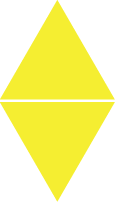
… or the fancy variant: two symmetrical and two asymmetrical triangles like shown below. This construction method has been used in the famous Clapotis pattern.
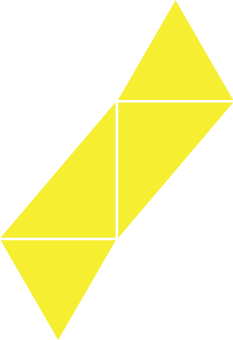
Pattern Template: Parallelograms (Rhomboids)
No pattern templates are given in this case as you can simply choose one of the four construction methods above and follow the pattern templates given for the single elements. Combine them freely to create your own shawl design patterns, and let me know how it goes by leaving a comment below!

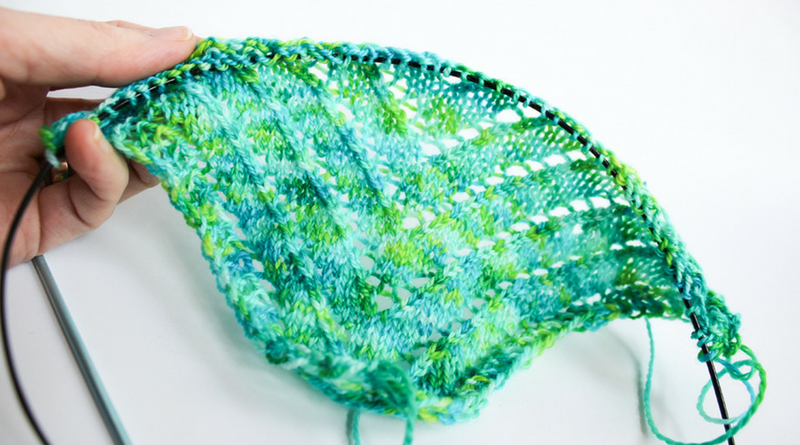
Pingback: Shawl Design for Everybody - Your Free Shawl Design Online Course
Hi
I am trying to knit the rectangular shawl with triangle ends and am following your template. I would however like to make the green shawl pictured and I don’t see the pattern. Please let me know where I can find the pattern?
Regards
Rochelle
The pattern is called Adjustable Greenie and can be found in the shop.
Pingback: 365 Days of Shawl Knitting - knitting.today
Pingback: Shawl Design for Everybody - Your Free Shawl Design Online Course